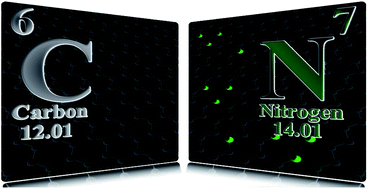Recent progress on nitrogen/carbon structures designed for use in energy and sustainability applications
Abstract
Heteroatom modification represents one of the largest studied areas of research related to nanostructured carbon materials, with integrated applications stretching from energy production and storage to sustainability and medical uses. While a wide variety of dopants (boron, phosphorus, iodine, fluorine, etc.) have been studied, doping carbon structures with nitrogen ad-atoms has arguably experienced the greatest progress and brought the most attention over the last several years. Research in this field has conclusively demonstrated that nitrogen doping is an effective way to tailor the properties of carbon and tune the material for various applications of interest. This review provides a comprehensive overview of advances in the last half decade on state-of-the-art carbon modification with nitrogen heteroatoms. Improvements in well-established fabrication/modification processes are discussed as well as novel strategies. Additionally, recent theoretical and experimental findings related to the benefits and effects of nitrogen modification for specific applications in the energy and environmental fields are reviewed.


 Please wait while we load your content...
Please wait while we load your content...